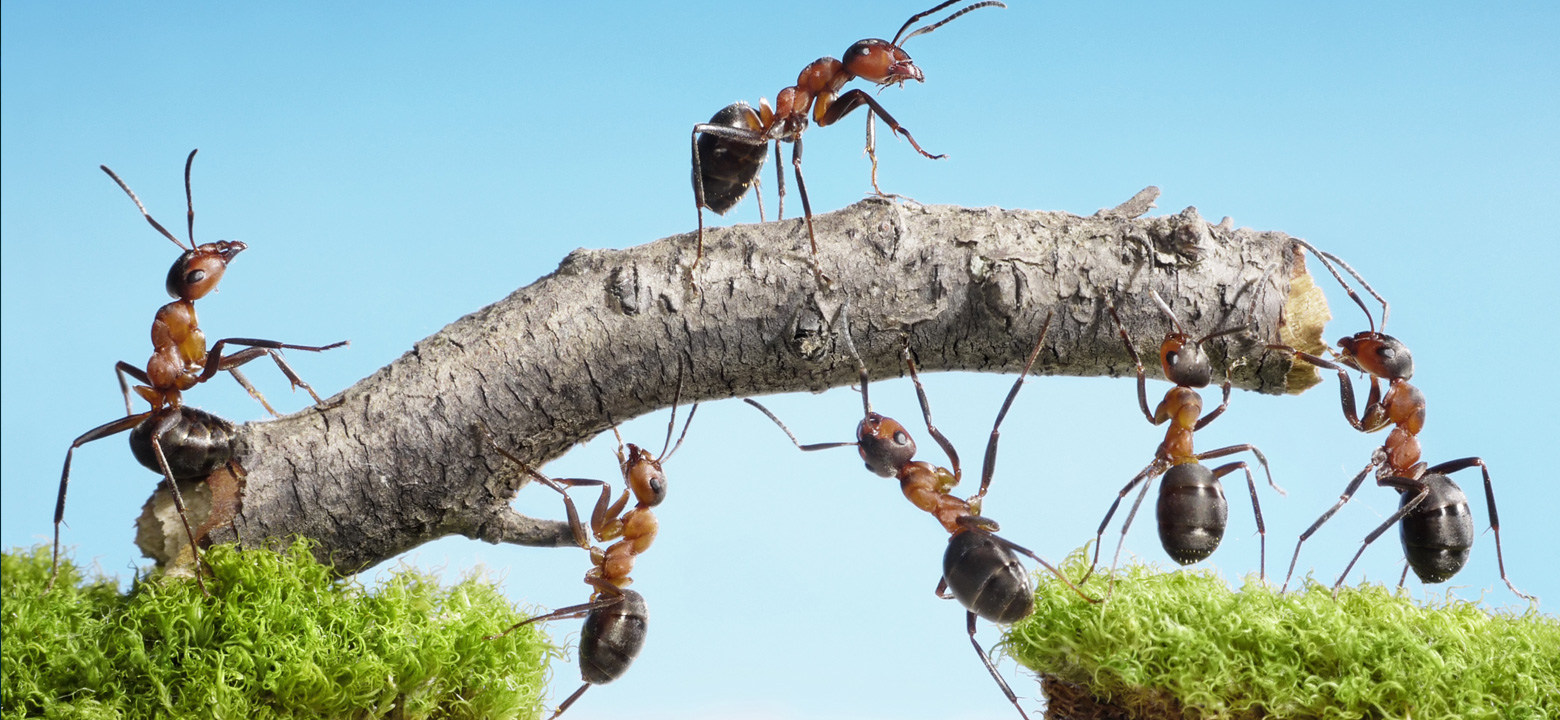
When it comes to engineering marvels, bigger isn't always better. In fact, nature provides an example of nature's best (and tiniest!) engineers: ants. These insects create some of the most astounding structures, using nothing but mud, plants, and even their own bodies.
Weaver ants get their names from their elaborate nests. Built-in treetops from living leaves, these nests require weaver ants to not only bend the leaves into the correct shape but weave them together using larval silk. These nests can be enormous, too—each colony may contain upwards of a million individuals, which means there's a lot of building to be done! Unfortunately for the tiny weaver ants, bending living, springy leaves require a lot of leverage. They get around this bin in numerous ways. First, they cooperate to test out each leaf, pulling on the edge to see how it bends. If it proves suitable, they link their bodies together in long chains to increase their strength as a unit. This gives them exactly what they need to pull the leaves together.
With the leaves bent in place, they weave them together by tapping on the heads of ant larvae. This makes the larvae excrete silk, which the weaver ants quickly use to bind their nests. These ants are so efficient at their engineering, they can build a large nest in less than a day.
Army ants are known for moving as, well, an army. They roam far and wide when they forage, which means having to cross very varied—and often dangerous—terrain. Since they're dealing with groups of over 200,000 ants, that means that they need to work together to construct roadways, bridges, and more to ensure an efficient flow of traffic. This would be a serious undertaking for any animal. Even humans have trouble creating efficient traffic patterns. It becomes more amazing when you remember that army ants are blind.
Coordinating in ways still unknown to scientists, army ants work together and use their bodies to construct scaffolds, allowing other ants to climb up without having to slow down. The time necessary to create the scaffold itself is dwarfed by the time saved when other ants climb up, and almost no ants fall from the scaffold compared to the vertical surface. These ants also have a surprisingly effective way of calculating the slope of the objects they need to climb—army ants will rarely build a scaffold on anything with an inclination of less than 40 degrees.
Fire ants live in areas that often experience flooding. For most small, terrestrial creatures, rising waters can be disastrous. Instead of scattering and hoping for the best, fire ants have engineered a unique way to survive floods: They form rafts.
These rafts are made up of clumps of ants, sometimes numbering as many as 100,000 individuals. The ants that form the raft lock together using their mandibles, gently grasping the legs of their neighboring ants. This tightly knit weave of ants on the bottom form a layer that's nearly watertight and very buoyant, allowing the colony members on top to remain dry. An individual ant can only stay safely afloat for a short time, but these rafts can stay afloat for months if necessary.
This behavior works because ants are naturally water-repellent. Under normal circumstances, this keeps them from dehydrating. When they clump up tightly together, the mass of ants forms a water-repellent surface. Interestingly, the bottom layer of ants also traps a pocket of air, called the plastron layer. This functions almost like a scuba tank for the ants on the bottom, allowing them to breathe. As a result, fire ants have created a way for their colony to survive floods while losing very few members.
Ants are very connected to their environment. Depending on where they live, they've developed specialized ways to use their terrain to their advantage. While a weaver ant is unlikely to survive a floor, a fire ant wouldn't be able to build a nest in a tree, either. The development of this specialized engineering behavior is what has allowed these tiny creatures to survive for so long, despite the dangers they face.